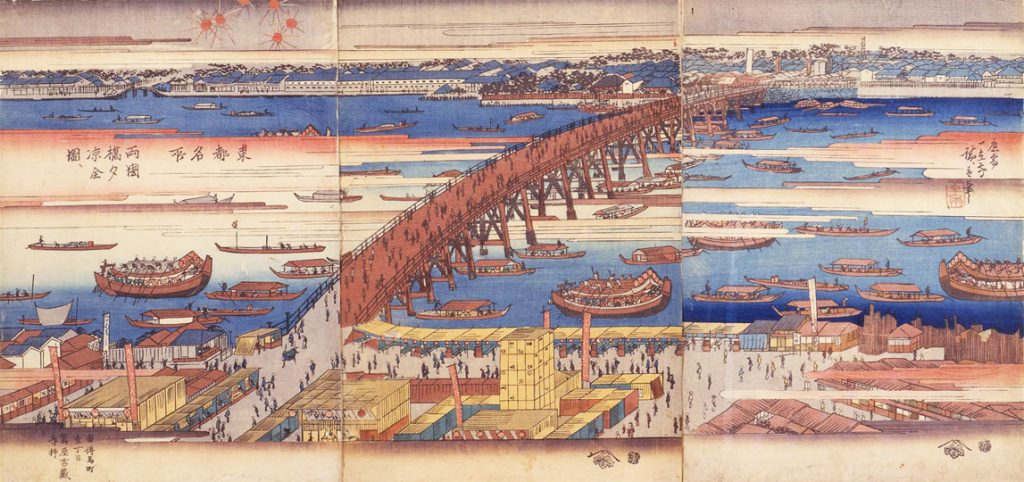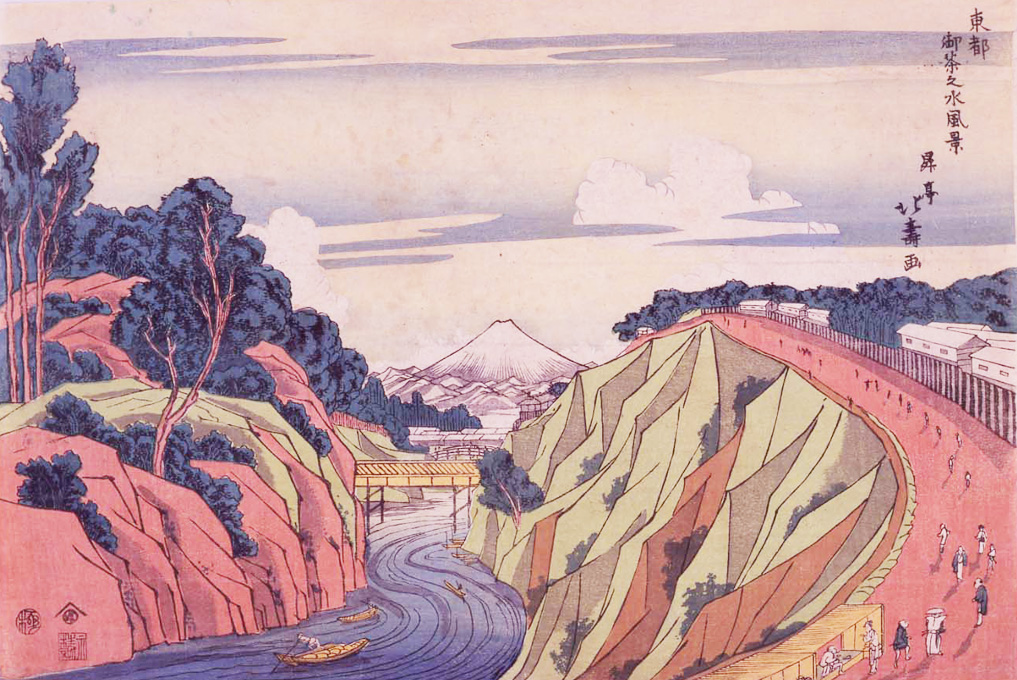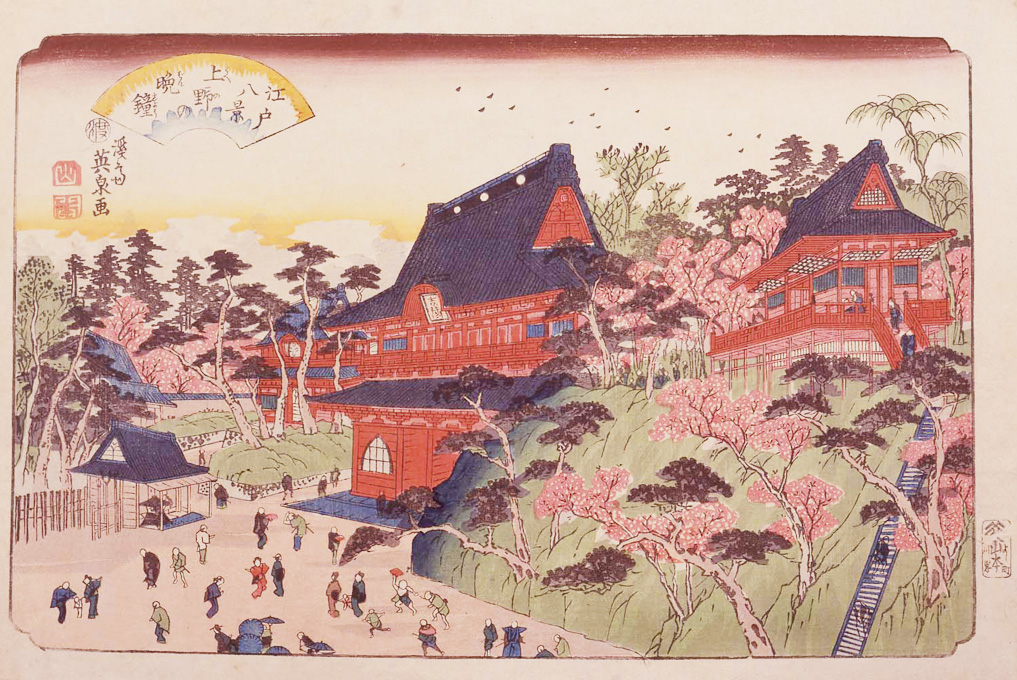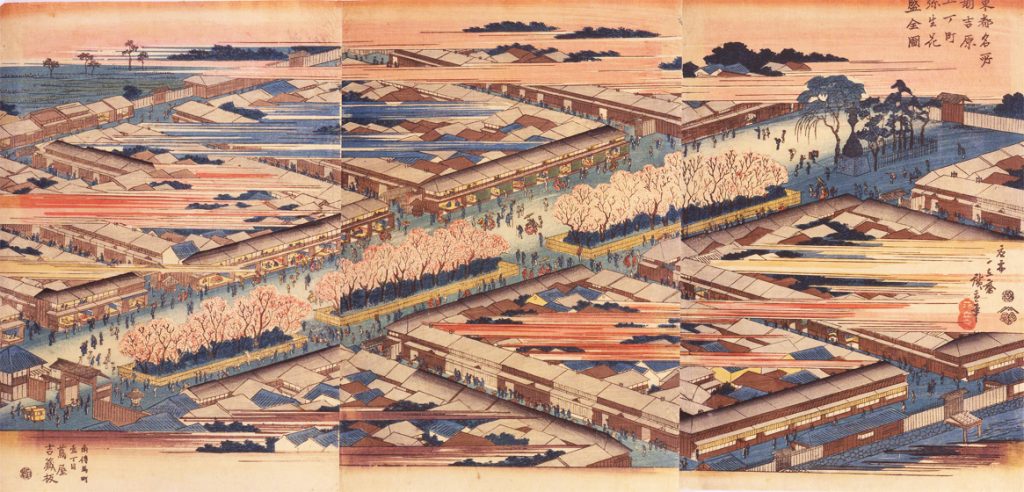Civil Engineering in Edo

2020, October 10th-November 8th
Will be closed on October 12, 19, 26, November 2.
Civil Engineering of Edo through ukiyo-e
In recent years, large-scale redevelopment in the main areas have called attention in Tokyo. At the same time, civil engineering itself has become a popular genre to be studied as a hobby. There are increasing number of books and magazine articles featuring bridges, dams, rivers, and topology. However, looking back in history, this is not a recent trend. In fact, Tokyo has developed through various civil engineering projects since the Edo period. In this exhibition, you can deepen your understanding of various civil engineering of Edo through the works of the ukiyo-e artists such as Utagawa Hiroshige and Katsushika Hokusai.

Civil engineering that created Edo, the megacity
100 years after the opening of the Tokugawa Shogunate by Tokugawa Ieyasu, Edo had become a megacity inhabited by more than one million people. What supported the extraordinary development of the city was the construction of urban areas and infrastructure using advanced civil engineering technology. The most notable are the Edo Castle and its outer and inner moats, landfill of Hibiya, Tsukiji, and Fukagawa, canals and water supply, bridges of Ryōgoku and Nihonbashi, as well as the huge temples such as Kan’ei-ji and Zōjō-ji.






Culture of redevelopment has its origin in the Edo period?
Large-scale constructions of shopping malls such as Shibuya Stream and Tokyo Midtown Hibiya are often considered as a recent trend. However, looking back in history, large-scale redevelopments were carried out frequently since the Edo period. Notable projects include the re-installment of the pleasure quarter from Yoshiwara to Shin-yoshiwara, and the redevelopment of Saruwaka Theater District. The Nakazu amusement quarter which only existed for about ten years before being demolished can be considered one of the first redevelopment projects of Tokyo as well.



Highlight of the Exhibition
Artist Unknown “Pagoda Finial Bent by the Ansei Great Earthquakes” /Utagawa Hiroshige “One Hundred Famous Views of Edo: Kinryūzan Temple, Asakusa”


Disasters and recovery –The Ansei Earthquake
There are continuous effort to recover from the Great East Japan. Edo was also frequently affected by fires and earthquakes. Each time, the people of Edo recovered from the destruction by conducting large-scale reconstructions all over the city. The Great Ansei Earthquake (1855) at the end of the Edo period is one of the severest disasters of Edo. The city suffered serious damage from this earthquake. Although the famous Sensōji Temple was not entirely destroyed, the nine-wheeled tower at the top of the Five-storied Pagoda was bent. The painting on the left depicts the pagoda after the earthquake. The work on the right is one of the “One Hundred Famous Views of Edo” by Utagawa Hiroshige published a year after the earthquake. In this painting, the nine-wheeled tower is no longer bent. Since this picture was published shortly after May 9th when the restoration of the tower was completed, it is considered to be a commemoration of the restoration project.
Admission
| Adult | 800 yen |
| University and High school students | 600 yen |
| Junior High School Students and below | Free |
Calendar
休館日
5-9,12,19,26
2020 / 10
5-9,12,19,26
| SUN | MON | TUE | WED | THU | FRI | SAT |
|---|
休館日
2,9-13,16,24,30
2020 / 11
2,9-13,16,24,30
| SUN | MON | TUE | WED | THU | FRI | SAT |
|---|
